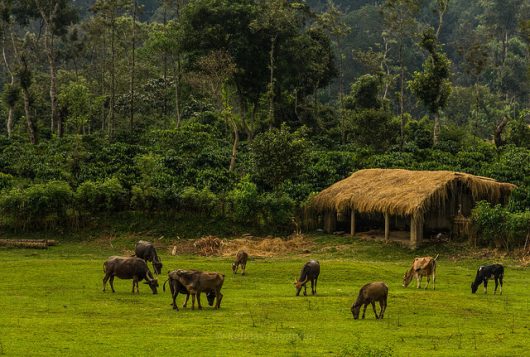Climate-Smart Agriculture: Programs and Practices

Climate-smart agriculture is the concept of increasing the sustainable development of farming and ensuring food security for all. The world must adapt to the changing climate to prevent more people from falling into poverty.
A rapidly growing population is causing the demand for food to swell quickly, but the vulnerability of agriculture to climate change is making it even more difficult for crop yields to meet the demand. The Food and Agriculture Organization reported that the world will need to increase food production by 70 percent in order to feed an estimated population of nine billion people in 2050. Here are five climate-smart ways that the international community is working to make agriculture more efficient and environmentally effective:
- The Food and Agriculture Organization’s Climate-smart Agriculture (CSA).
CSA provides access to climate-related information, including terminology and global issues. The approach responds to climate change by aiming to increase crop resilience and reduce greenhouse gases. Climate-smart agriculture also provides specific country profiles to allow nations to apply methods suited to their conditions. - Evergreen Agriculture
Evergreen agriculture adds trees to crop and livestock systems. The practice eliminates the need for expensive fertilizers by letting the trees take in nitrogen from the air and release it into the soil.
In Zambia, the indigenous African Faidherbia Albida tree has helped to triple maize production, according to the World Agroforestry Center. The climate-smart method is resistant to drought, decreases greenhouse gases, saves water and enhances soil fertility. Evergreen agriculture is a cost-effective response to climate change and increasing productivity. The project won the Climate Week Award in 2013 for its developments in farming. - National Agricultural Information System in Uruguay
The Minister of Agriculture aimed to increase sustainable development farming and a climate-smart response to agriculture in Uruguay. A percentage of a loan from the World Bank was allocated to establish this National Agricultural Information System. The system provides data and research on climate responsible agriculture. Reaching for preparedness, the National Agricultural Information System includes forecasts, outlooks and climate risk assessments. - West Africa Agricultural Productivity Program
The West Africa Agricultural Productivity Program is an initiative between 13 West African countries to increase sustainability and jobs in agriculture, as well as improve food security. This program partners with researchers, scientists and farmers to reach their goal of increasing agricultural growth by six percent, and has an online and phone resource center (e-Agriculture program) to make information and advice available to farmers in Ghana. - The Green Growth Strategy for Karnataka
The Global Green Growth Institute and Bangalore Climate Change Initiative partnered to create the Green Growth strategy for Karnataka, India. After determining climate change-related challenges and potential solutions, Micro Irrigation became the priority. India’s Government created a workshop on micro irrigation in 2015 and designed systems for implementing affordable micro-irrigation opportunities for small farmers. Introducing widespread micro-irrigation will save energy, water, labor and costs.
According to the World Bank, 70 percent of the world’s population lives in rural areas where agriculture is their main source of income. Poverty, hunger, agriculture and climate change are deeply connected. Creating climate-smart farming throughout the world can mitigate the harsh effects of changing climate as well as reduce poverty.
– Erica Rawles
Photo: Flickr
